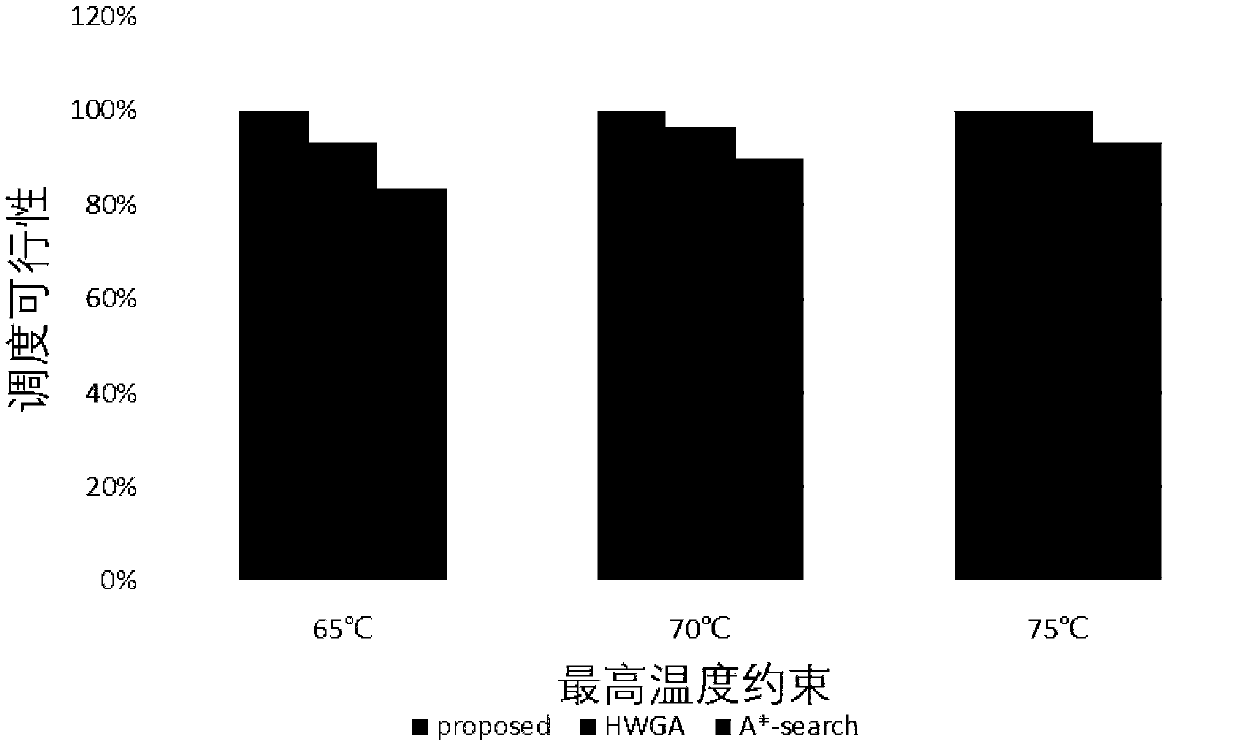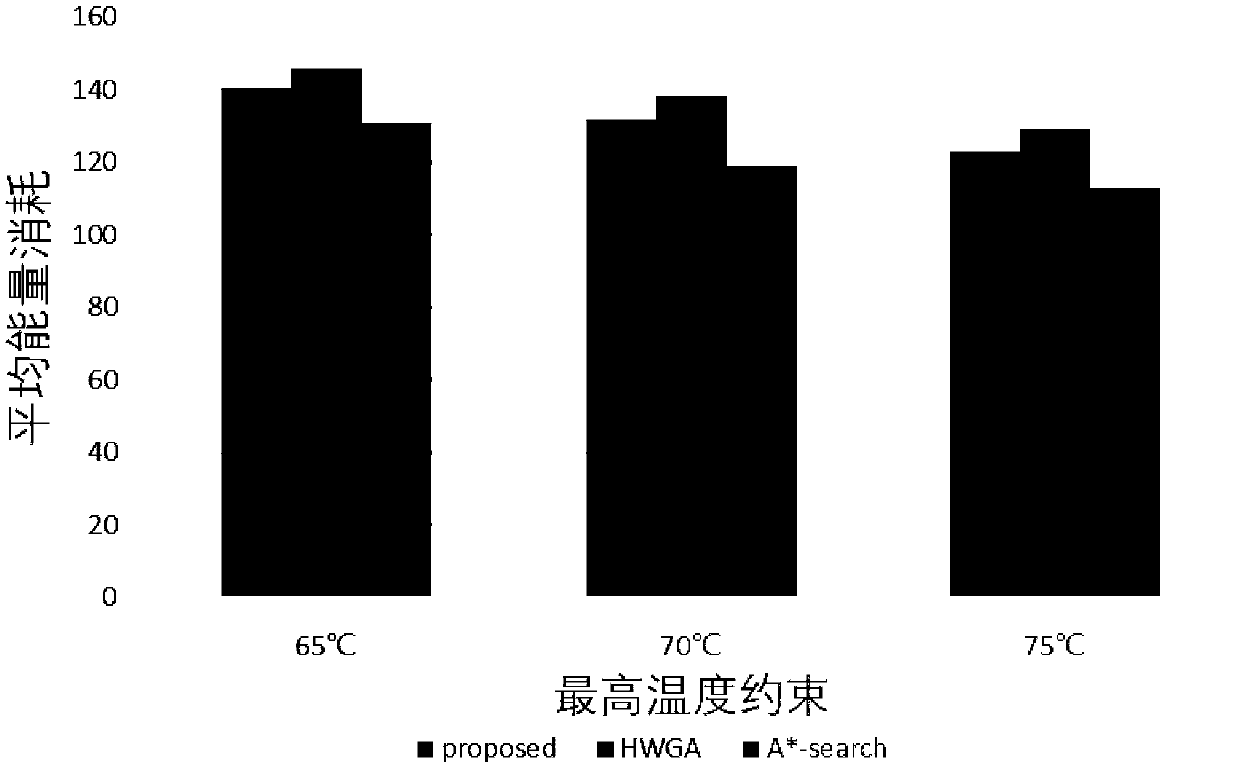Thermal-sensing and low-energy consumption task scheduling method oriented to heterogeneous MPSoC system
A task scheduling, low-energy technology, applied in energy-saving computing, architecture with a single central processor, multi-programming devices, etc., can solve problems such as reduced system reliability, increased leakage power, increased packaging costs and cooling costs, etc.
- Summary
- Abstract
- Description
- Claims
- Application Information
AI Technical Summary
Problems solved by technology
Method used
Image
Examples
Embodiment Construction
[0057] In order to describe the objectives, technical solutions and advantages of the invention more clearly, the invention will be further described in detail below with reference to the accompanying drawings and specific embodiments.
[0058] The present invention uses two task sets to verify the effectiveness of the present invention, one task set is a synthetic real-time task, and the deadlines of all generated tasks are within [4*10]. 7 , 6*108 ], task priorities are randomly distributed between [0.4, 1]; the other task set is four real multimedia applications, namely mpegplay, madplay, tmndec and toast.
[0059] The present invention also works with a hybrid worst-fit genetic algorithm (HWGA) and a * -search algorithm to compare. Hybrid Worst Fit Genetic Algorithm combines a worst-fit based partition heuristic with a genetic algorithm to generate task assignments that reduce energy consumption while satisfying all design constraints. A * -search algorithm is an optima...
PUM
 Login to View More
Login to View More Abstract
Description
Claims
Application Information
 Login to View More
Login to View More - R&D
- Intellectual Property
- Life Sciences
- Materials
- Tech Scout
- Unparalleled Data Quality
- Higher Quality Content
- 60% Fewer Hallucinations
Browse by: Latest US Patents, China's latest patents, Technical Efficacy Thesaurus, Application Domain, Technology Topic, Popular Technical Reports.
© 2025 PatSnap. All rights reserved.Legal|Privacy policy|Modern Slavery Act Transparency Statement|Sitemap|About US| Contact US: help@patsnap.com



